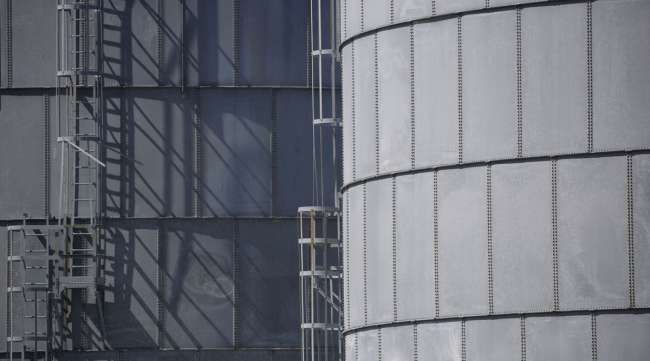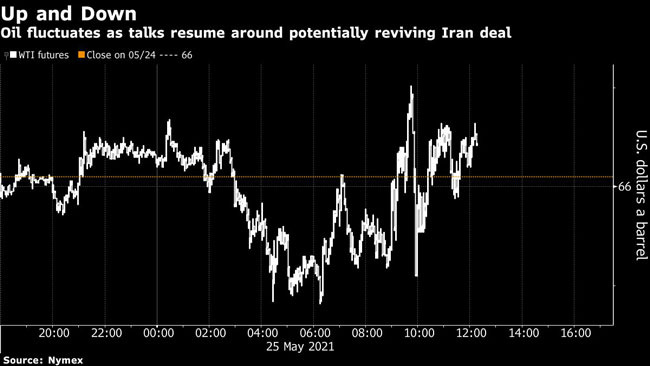Bloomberg News
Oil Wavers With Talks Resuming on Potentially Reviving Iran Deal

[Ensure you have all the info you need in these unprecedented times. Subscribe now.]
Oil was little changed as investors weighed talks of higher Iranian supply against the prospect of a continued recovery in demand.
West Texas Intermediate edged higher after switching between gains and losses in a roughly $1-a-barrel trading range. Talks between Iran and other nations continued in Vienna on May 25 to resolve outstanding issues on a nuclear accord, which may pave the way for the removal of U.S. sanctions on crude flows from the Persian Gulf nation.
“The market will likely remain choppy” with the potential supply increase being weighed against projected demand this summer, said Tom Finlon, of Brownsville GTR, a trading and logistics firm based in Houston. Regarding the talks, “diplomats have to speak in optimistic terms, but there are still some significant hurdles to climb” before a nuclear deal is finalized.
Beyond the prospect of a further ramp-up of Iranian production, a tens-of-millions-of-barrels stash of oil floating on tankers is at stake in the event of the U.S. lifting its sanctions on the OPEC member. Iran may be holding as much as 69 million barrels at sea, according to estimates from E.A. Gibson Shipbrokers Ltd., though it is hard to be sure exactly how big the floating stockpile really is.

Meanwhile, the global demand recovery remains uneven, with improving mobility in countries such as the U.S. and Europe contrasting against a rampant virus spread in other places, notably India. A sample of 15 European cities was the most congested since March 2020 last week, according to data from TomTom. In the U.S., virus cases are falling and the upcoming Memorial Day break, a three-day weekend for many, marks the start of the nation’s summer driving season.
“We’re going to need some sort of bullish inventory report or further validation of Europe’s recovery to really move to the next level,” said Jay Hatfield, CEO of Infrastructure Capital Management. In the meantime, the market “is in a consolidation phase, waiting for the demand story to unfold” while the prospect of more Iranian barrels is adding price pressure.
Among the most prominent moves in oil markets over the past few days, U.S. crude’s discount to global benchmark Brent has narrowed sharply, which at least partly reflects concerns over potentially more Iranian supply. WTI was trading as little as $2.21 below Brent on May 25, the closest the two grades have been since November. At the same time, WTI’s backwardation — when near-term contracts are pricier than those further out — has firmed in recent days, indicating tight supplies.
The spread between the two benchmarks “is narrowing because of the fear of Iranian barrels coming on board, as Brent is more sensitive to international developments than WTI is,” said Bob Yawger, head of the futures division at Mizuho Securities. “Generally speaking, when that gets inside $3 a barrel, it starts to affect U.S. export capability.”
Expectations are for U.S. domestic stockpiles to have fallen last week, according to a Bloomberg survey. The industry-funded American Petroleum Institute reports its figures later Tuesday ahead of U.S. government data on Wednesday.
Want more news? Listen to today's daily briefing below or go here for more info:




